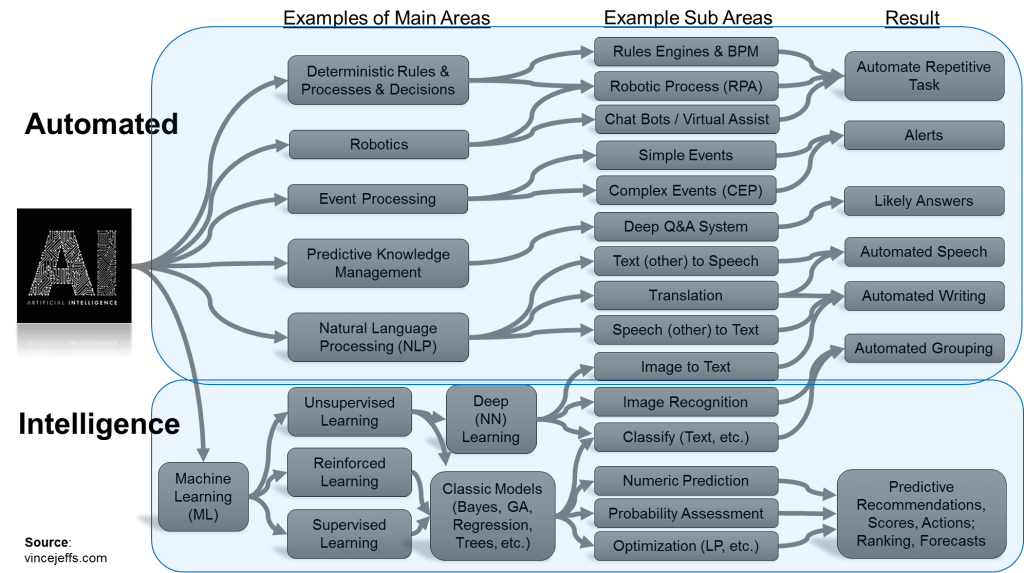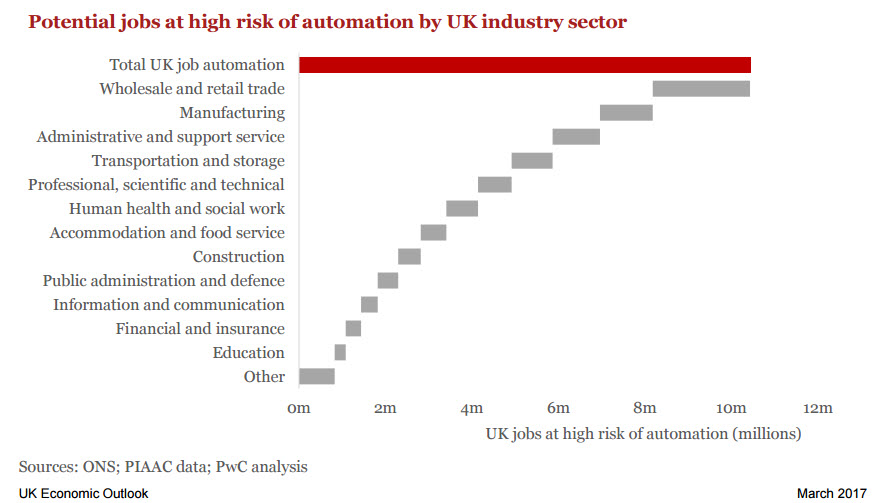According to the Chinese calendar, 2016 was the year of the monkey, but in technological terms, it felt more like the year of a silicon-based animal named “Chat Bot.” And 2017 is shaping up to be the year of an even more amorphous but evolving creature nicknamed, AI – Artificial Intelligence. The level of hype in the marketplace over AI continues to climb, with no peak in sight. Yet interestingly, in a recent Pegasystems worldwide survey of 6000 consumers, 80% said they prefer to chat with a human when getting service. Humans prefer humans. Go figure. We’re fickle beasts, after all, and the implications are profound given this paradox between technological advancement and human interaction.
Ironically, as technologies improve, in the not too distant future these same consumers may at times not even realize they’re actually conversing with a machine. And stranger still, once things blur further, the whole notion of a human touch may be redefined as partially or fully delivered by machines.
Meanwhile, most CRM journeys still require, at one stage or another, interfacing with carbon-based life forms. As businesses design the transition and inexorably march toward using technology for increased efficiency and more digital engagements, how can they ensure consumers get what they want – relevant, rewarding, and timely brand exchanges?
On the surface, these two seemingly opposed forces appear to necessitate tradeoffs where one approach wins over the other. A superior solution, however, may involve deploying hybrid AI in selective and meaningful ways. Pure technological AI (Automated Intelligence) might replace humans in some cases, but using AI to augment human functioning may prove equally valuable, where its role amplifies human capabilities and minimizes human limitations.

What is a “Human Touch?”
Consider these aspects of an agents’ human touch (where an agent can be a human or machine):
• The agent sounds human & conveys empathy (in contrast, Alexa doesn’t sound human yet).
• The agent listens (senses), comprehends, and suggests (responds) reasonable courses of action based on the contextual understanding of the current conversation.
• The agent displays good judgement, resourcefulness, and common sense in real-time problem solving; achieving status as a strategic business partner.
• The agent builds a level of trust with the customer; achieving status as a trusted advisor.
• The agent can personalize, making the customer feel like a special individual.
• The agent builds a relationship with the customer by telling stories related to the conversation, drawing from experience, and using that to relate to the individual.
• The agent recalls important details of previous conversations.
All these may sound difficult if not impossible for machines to mimic, however advances in artificial intelligence and machine learning are beginning to bridge the gap. Again when asked, most consumers believe AI has the potential to improve customer service (in that same consumer study, only 26% did not believe it could), suggesting that once it does, and if it acts in a more human-like manner, they may not care who is servicing them provided they consistently get what they want. So what is it that humans want?
Humans want:
• Short or no wait times
• Accessible service (when they need it and wherever they are)
• Fast service once the process starts. A sense of urgency to solve problems
• Coordinated, coherent, and seamless service (ability to switch channels, and not have to restart)
• Personalized products, services, and support
• Accurate & fast answers to their questions
• A warm and friendly experience that is welcoming, enjoyable and leaves them feeling special
In short, a memorable and extraordinary experience that is story worthy.
Pitfalls to avoid when applying AI in CX
In planning for success, it’s critical to consider what to avoid, minimizing unnecessary mistakes. To improve machine or human performance, learn from the mistakes of others. Here are some pitfalls to sidestep:
• Tendency to over automate before you carefully assess the affect total automation may have on customer experience. It may be improving the bottom line (in the short run), but is it ultimately improving CX, or making it worse?
• Placing a premium on being cute with technology or customer information, while not focusing on whether the outcome is actually ideal. Scrutinize the value of the technology. Improper use can backfire, such as wishing a customer happy birthday when they never gave you permission to gather and use their birthdate.
• Loosing sight of the root cause and fixing it. Why did the customer ask for support in the first place?
• Designing programs based on the law of averages versus factoring in individual customer preferences & valuation. Remember, some important customers may require human interaction, and it might be economically justified to provide just that.
• Falling victim to automation bias – Becoming sloppy, complacent, insensitive, and dulled, because machines take care of so many customer service tasks – and when humans are called on to provide service, they can’t – due to being rusty, incompetent, or rendered totally incapable.
5 Ways to employ AI in CX
• Automate the no brainers. For example, use automation & intelligence to lookup routine customer information, answer frequently asked questions (FAQs), get order status, or even process a payment.
• Use automation & intelligence to classify and route emails, calls, and other requests. They’ll get faster to the right people that can ultimately close out the case.
• Augment staff with intelligence, such as using a deep knowledge base, with AI filtering and learning capabilities, to rank likely answers to FAQs, and provide those to staff so they can quickly answer questions, while still providing a human touch.
• Take interest in what matters to the customer and knowing things about them pertinent to the relationship. Use AI to help store and recall critical material at the right moment, and let humans decide how and when to weave that into conversation for a natural flow.
• Ensure warm handoffs between self-service technology and the humans who might have to complete the servicing. For example, when a customer engages in self-service, but then escalates, guarantee a comprehensive and seamless transition of the self-service transaction to human agents.
Follow advances in AI technologies that apply a human touch:
• Experiment with human-like NLP (Natural Language Processing) and Deep Learning – this coincides with striving for an overall system that is friendly, inviting, warm, and conversational. Simultaneously guard against AI’s detrimental potential, such as being greedy and discriminatory.
• Test using prescriptive intelligence techniques that incrementally improve relationships.
• Use real-time event processing technologies that leverage in the moment contextual data.
• Select one platform to be the always-on brain, and use it as the corporate customer memory bank, insight generator, and engagement hub – the dependable friend or relative that always remembers.
• Carefully construct overall experiences using automation, intelligence, and human beings together delivering an optimal result.
We’re all developing relationships with machines and already extremely dependent on them. We talk to devices, sometimes raising our voices, use them as our assistants, and even listen to and laugh at their jokes. Although it may be unlikely we’ll be dating or marrying one soon (a la the movie “Her”), they certainly already appear to be our companions, and just as we love our pets, our machines are quickly becoming another best friend.
AI is here to stay. Make no mistake – it’s going to replace some jobs entirely, and take over many tasks, just as the industrial revolution did. An economic outlook published in March predicts by 2030 automation will replace as many as 40% of current jobs, such as transportation, manufacturing, and trade. However, where social skills are paramount, such as in customer service and social work, forecasters expect the impact to be radically less.

In another study by Forrester, it was speculated that as many as 16% of US jobs will be replaced by AI. At the same time, with any technological change, new opportunities arise and new jobs will emerge such as AI architects, business scientists, and governance managers.
As machines and their makers relish in monopolizing and optimizing commercial interactions for convenience and efficiency, the true winners will be those that realize we’re still social animals and as such, we still delight in delightful human interactions. Great brands will be those that devise seamless experiences that weave together machines and humans, tuned to each individual’s preference for the synthetic and humanoid mix.
As CX experts involved in shaping these AI and human experiences, design them wisely with these considerations in mind.



